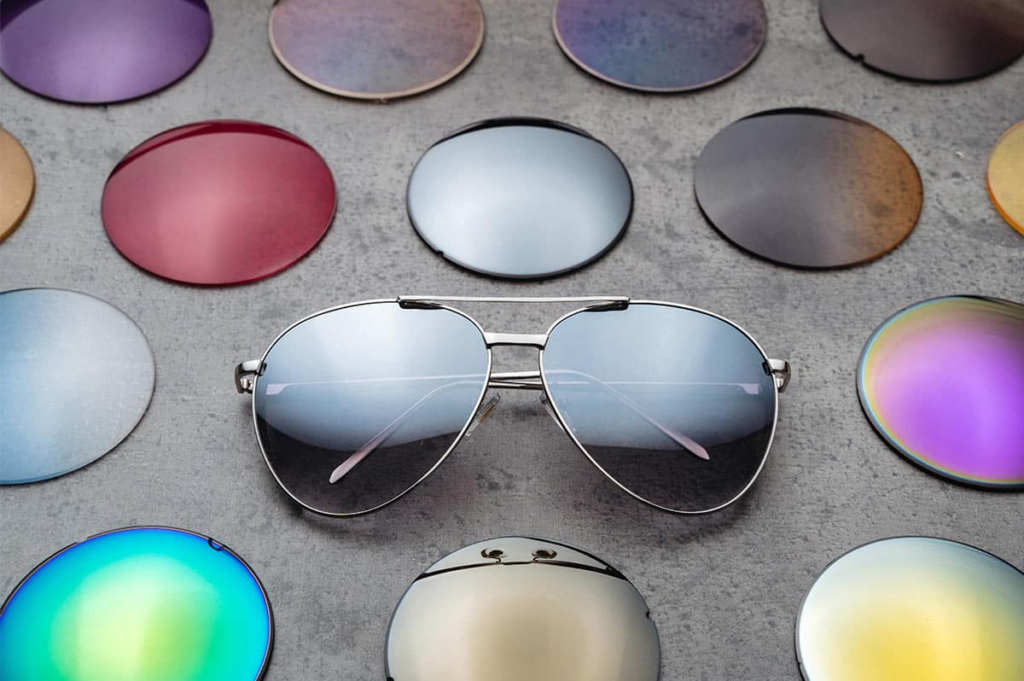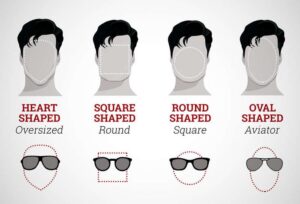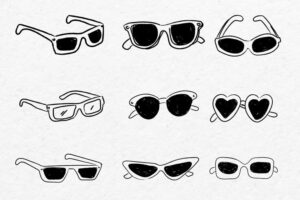Selecting the right lenses for your sunglasses involves considering several factors to ensure they provide the best protection, comfort, and style for your needs. Here are some key points to consider:
1. UV Protection:
• Look for 100% UV Protection: Ensure the lenses block 100% of both UVA and UVB rays. This is crucial for protecting your eyes from harmful ultraviolet radiation.
• Check for UV400 Labels: This indicates that the lenses block all light rays with wavelengths up to 400 nanometers, offering full protection.
2. Lens Material:
• Glass Lenses: Offer excellent clarity and scratch resistance but are heavier and can shatter upon impact.
• Polycarbonate Lenses: Lightweight, impact-resistant, and offer good UV protection, but can scratch more easily than glass.
• Nylon Lenses: Lightweight, impact-resistant, and often used in sports sunglasses.
• Acrylic Lenses: Less expensive, suitable for casual or fashion sunglasses, but not as durable or clear as other materials.
3. Lens Color:
• Gray: Reduces overall brightness while preserving natural color balance, making it a good general-purpose choice.
• Brown/Amber: Enhances contrast and depth perception, suitable for variable light conditions and outdoor activities.
• Yellow/Gold: Excellent for low-light conditions, enhances contrast and depth perception, often used for skiing, snowboarding, and other sports.
• Green: Reduces glare and enhances contrast without distorting colors, suitable for general use.
• Blue/Purple: Mostly cosmetic, can help reduce glare in specific conditions but does not enhance contrast significantly.
4. Polarization:
• Polarized Lenses: Reduce glare from reflective surfaces like water, snow, and glass. Ideal for driving, fishing, skiing, and other outdoor activities. Look for labels indicating polarization.
5. Lens Coatings:
• Anti-Reflective Coating: Reduces glare from light reflecting off the back of the lenses.
• Mirror Coating: Reduces the amount of light entering the eyes, useful in very bright conditions.
• Hydrophobic Coating: Repels water, useful for water sports or rainy conditions.
• Scratch-Resistant Coating: Increases durability by protecting against scratches.
6. Frame Fit and Comfort:
• Ensure the sunglasses fit well and feel comfortable on your face. The lenses should cover your eyes completely to provide adequate protection.
7. Purpose and Activity:
• Consider the primary use of your sunglasses. Different activities may require specific lens features. For example, sports sunglasses may need impact-resistant lenses and a secure fit, while fashion sunglasses prioritize style.
8. Prescription Needs:
• If you require prescription lenses, ensure the sunglasses can accommodate them. Many brands offer prescription sunglasses or clip-on lenses.
Feel free to contact and ask for more information!







